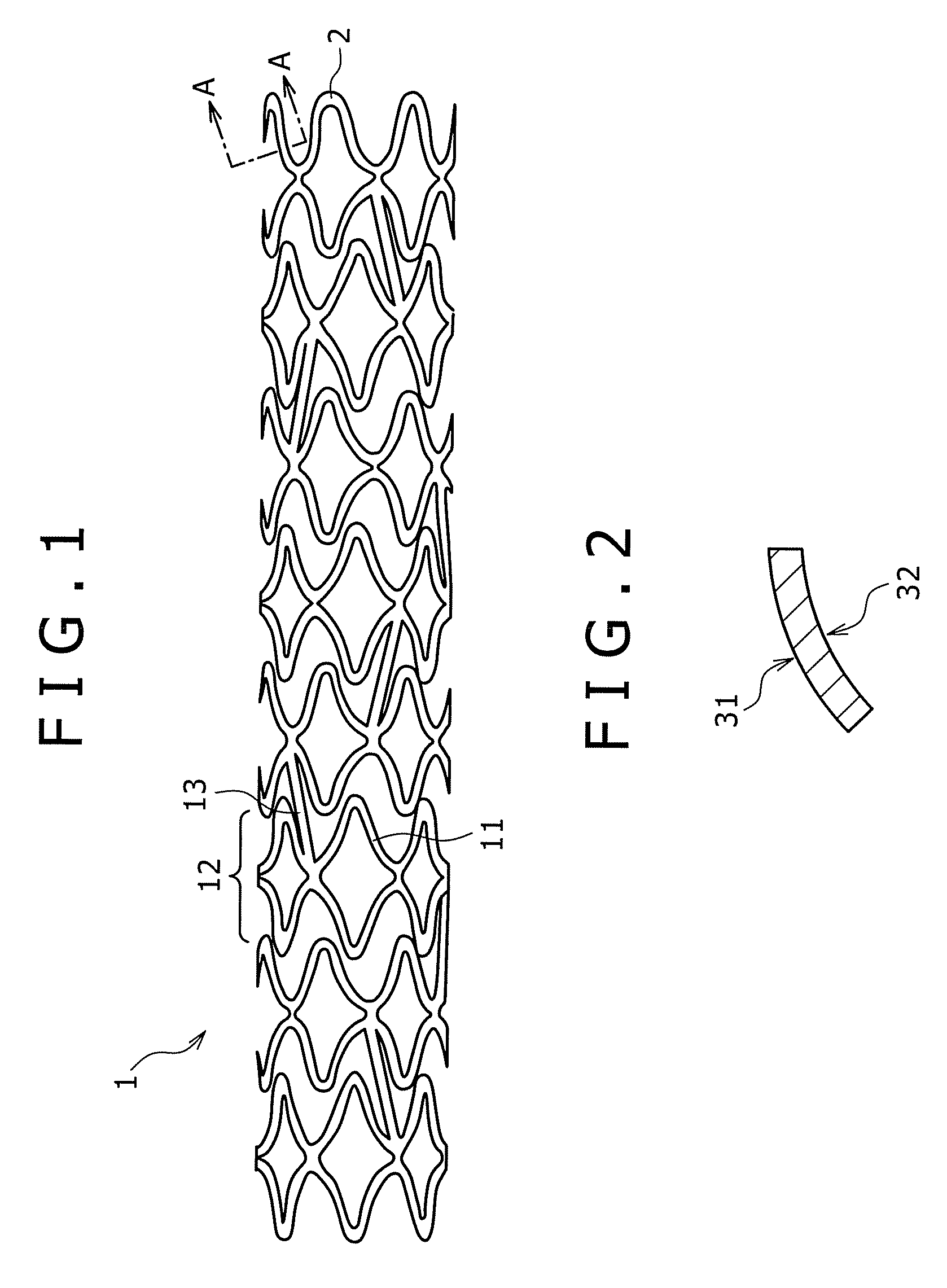Medical implant
a technology of medical implants and implants, applied in the field of medical implants, can solve the problems of high energy cost required for maintaining the molten metal in a superheated state, difficult to control the decomposition (degradation) rate of medical implants in living organisms, and material limitations, and achieves low material strength, high ductility, and high strength.
- Summary
- Abstract
- Description
- Claims
- Application Information
AI Technical Summary
Benefits of technology
Problems solved by technology
Method used
Image
Examples
example 1
[0169]As a specimen, an AZ31B alloy was prepared.
[0170]The specimen was subjected to a solution treatment at 700K for 36000 sec by an electric furnace, then to hot rolling (draft per pass: about 5%; final draft: 50%) at 573K, and to annealing at 473K for 36000 sec.
[0171]Here, the specimen after the solution treatment (referred to Specimen 1) and the specimen after the annealing (referred to Specimen 2) were observed microscopically. The microscope was an optical microscope (produced by Leica Inc.), and the magnification was 100 to 1000.
[0172]While Specimen 1 had a crystal grain diameter of about 30 to 70 μm, Specimen 2 had a crystal grain diameter of about 3 to 8 μm. Thus, refining of crystal grains was achieved by rolling and annealing.
[0173]From Specimens 1 and 2, specimens having a thikness of 0.65 mm, a width of 3 mm and a length of 6 mm were obtained by cutting in parallel to the rolling direction (the thus obtained specimens are referred to respectively as Specimen 10 and Spec...
example 2
[0174]From Specimen 2, a square rod member having a thickness of 8 mm, a width of 8 mm and a length of 100 mm was obtained by cutting, and was subjected to centerless polishing, to obtain a round rod member having a diameter of 3 mm. A through-hole with a section diameter of 2.4 mm was bored inside the round rod member by lathe machining, to produce a pipe. The pipe was hot drawn at 573K, to obtain a pipe having an outer diameter of 2 mm and an inner diameter of 1.6 mm.
[0175]Upon observation of the pipe under the same microscope as Example 1 and in the same conditions as above, the crystal grain diameter was found to be 2 to 3 μm. Thus, a further refining was confirmed. This is considered to be attributable to dynamic recrystallization during the hot drawing.
example 3
[0176]The pipe produced in Example 2 was subjected to laser beam machining, to produce a stent having a diameter of 2 mm and a length of 15 mm. The stent was expanded to a diameter of 3 mm by a balloon catheter. The stent showed no broken portion even upon expanding. It was thus confirmed that a stent suited to practical use can be produced in this manner.
PUM
| Property | Measurement | Unit |
|---|---|---|
| Diameter | aaaaa | aaaaa |
| Mass | aaaaa | aaaaa |
| Mass | aaaaa | aaaaa |
Abstract
Description
Claims
Application Information
 Login to View More
Login to View More - R&D
- Intellectual Property
- Life Sciences
- Materials
- Tech Scout
- Unparalleled Data Quality
- Higher Quality Content
- 60% Fewer Hallucinations
Browse by: Latest US Patents, China's latest patents, Technical Efficacy Thesaurus, Application Domain, Technology Topic, Popular Technical Reports.
© 2025 PatSnap. All rights reserved.Legal|Privacy policy|Modern Slavery Act Transparency Statement|Sitemap|About US| Contact US: help@patsnap.com


